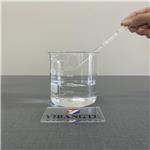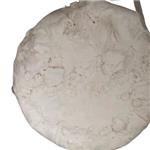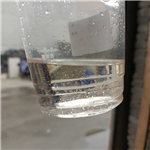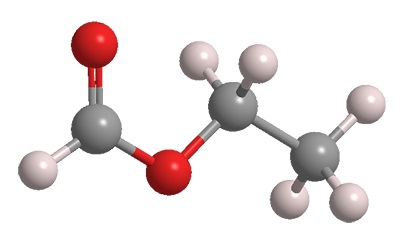- Ethyl formate
-

- $0.00 / 1kg
-
2023-11-29
- CAS:109-94-4
- Min. Order: 1kg
- Purity: 0.99
- Supply Ability: 50000kg
- ethyl formate
-

- $100.00/ kg
-
2023-06-16
- CAS:109-94-4
- Min. Order: 1kg
- Purity: 99%
- Supply Ability: 500t/month
- Ethylformate
-

- $6.00 / 1KG
-
2023-03-27
- CAS:109-94-4
- Min. Order: 1KG
- Purity: 0.99
- Supply Ability: 4t
Related articles - Method for producing ethyl formate
- Ethyl formate is an ester formed when ethanol (an alcohol) reacts with formic acid (a carboxylic acid). Ethyl formate has the ....
- Nov 8,2019
|
| | Ethyl formate Basic information |
| | Ethyl formate Chemical Properties |
| Melting point | -80 °C (lit.) | | Boiling point | 52-54 °C (lit.) | | density | 0.921 g/mL at 20 °C (lit.) | | vapor density | 2.5 (vs air) | | vapor pressure | 15.16 psi ( 55 °C) | | refractive index | n20/D 1.359(lit.) | | FEMA | 2434 | ETHYL FORMATE | | Fp | 7 °F | | storage temp. | 2-8°C | | solubility | Miscible with alcohol, benzene, and ether (Hawley, 1981) | | form | Liquid | | color | Clear | | Odor | Characteristic; pleasant aromatic. | | Odor Threshold | 2.7ppm | | explosive limit | 16% | | Odor Type | ethereal | | Water Solubility | 11 g/100 mL (18 ºC) | | Sensitive | Moisture Sensitive | | JECFA Number | 26 | | Merck | 14,3807 | | BRN | 906769 | | Henry's Law Constant | 0.097(x 10-3 atm?m3/mol) at 5.00 °C, 0.13 at 10.00 °C, 0.17 at 15.00 °C, 0.23 at 20.00 °C, 0.29 at 25.00 °C (column
stripping-UV, Kutsuna et al., 2005) | | Exposure limits | TLV-TWA 100 ppm (~300 mg/m3) (ACGIH,
MSHA, and OSHA); IDLH 8000 ppm
(NIOSH). | | Dielectric constant | 8.4(6℃) | | Stability: | Stable. Extremely flammable. May form explosive mixtures with air. Note low flash point and wide explosive limits. Incompatible with strong oxidizing agents, strong bases, strong acids, nitrates. | | InChIKey | WBJINCZRORDGAQ-UHFFFAOYSA-N | | LogP | 1.504 at 25℃ | | CAS DataBase Reference | 109-94-4(CAS DataBase Reference) | | NIST Chemistry Reference | Formic acid, ethyl ester(109-94-4) | | EPA Substance Registry System | Ethyl formate (109-94-4) |
| | Ethyl formate Usage And Synthesis |
| Description | Ethyl formate is an ester formed when ethanol (an alcohol) reacts with formic acid (a carboxylic acid). It is also known as ethyl methanoate because formic acid is also known as methanoic acid. Ethyl formate has the characteristic smell of rum and is also partially responsible for the flavor of raspberries.
 | | Chemical Properties | Ethyl formate has a characteristic, pungent odor similar to ethyl acetate and reminiscent of pineapple and a slightly bitter taste. It has been also reported to have a rum-like odor. The ester is slightly soluble in water (9 parts/100 at 18 °C) with gradual decomposition into formic acid and ethanol; it is miscible in ethanol, ether, and acetone (HSDB, 2013), as well as in benzene. | | Physical properties | Colorless and transparent liquid, volatile, with a pleasant, fruity odor. Miscible with ethanol and ether, soluble in acetone. The solubility in water is 11.8g/100ml. | | Occurrence | Reported in the oil of Boronia dentigeroides; it has been identified in Florida orange juice, several varieties of
honey, apple and pear and in distilled liquors, such as rum. Also reported found in peach, raspberry, strawberry, pineapple, cabbage,
vinegar, cheeses, butter, cream, milk powder, cooked beef, beer, coffee, tea, honey, corn oil, brandy and mussels. | | Uses | Ethyl Formate is a flavoring agent that occurs naturally in some plant oils, fruits, and juices but does not occur naturally in the ani- mal kingdom. it is used in food at a maximum level, as served, of 0.05% in baked goods; 0.04% in chewing gum, hard candy, and soft candy; 0.02% in frozen dairy desserts; 0.03% in gelatins, puddings, and fillings; and 0.01% in all other food categories.
Ethyl formate is also used as a solvent for nitrocellulose; as fungicide and larvicide for tobacco, cereals, dried fruits, etc.; in organic synthesis. | | Preparation | Ethyl Formate is an ester of formic acid and is prepared by esterification of formic acid with ethyl alcohol or by distillation of ethyl acetate and formic acid in the presence of concentrated sulfuric acid. | | Definition | ChEBI: Ethyl formate is a formate ester resulting from the formal condensation of formic acid with ethanol. It has a role as a fumigant and a plant metabolite. It is a formate ester and an ethyl ester. | | Taste threshold values | Taste characteristics at 60 ppm: sweet, chemical with clean, fresh, fruity lift. | | General Description | A clear colorless liquid with a pleasant odor. Flash point -4°F. Less dense than water. Vapors heavier than air. | | Air & Water Reactions | Highly flammable. Soluble in water. Slowly decomposed by water to formic acid, a corrosive material and ethyl alcohol, another flammable liquid. | | Reactivity Profile | Ethyl formate is an ester. Esters react with acids to liberate heat along with alcohols and acids. Strong oxidizing acids may cause a vigorous reaction that is sufficiently exothermic to ignite the reaction products. Heat is also generated by the interaction of esters with caustic solutions. Flammable hydrogen is generated by mixing esters with alkali metals and hydrides. Ethyl formate is incompatible with the following: Nitrates; strong oxidizers, alkalis & acids [Note: Decomposes slowly in water to form ethyl alcohol and formic acid.] . | | Health Hazard | The irritant action of ethyl formate inthe eyes, nose, and mucous membranes ismilder than that of methyl formate. How ever it is more narcotic than the methylester. Cats exposed to 10,000 ppm died after90 minutes, after deep narcosis. A 4-hourexposure to 8000 ppm was lethal to rats.Inhalation of 5000 ppm for a short periodproduces eye and nasal irritation and salivation in rats. The toxic effects from ingestion include somnolence, narcosis, gastritis,and dyspnea. The oral LD50 values in various test animals range between 1000 and2000 mg/kg. | | Fire Hazard | Highly flammable liquid. Vapor is heavier than air and may travel long distance to a source of ignition and flash back. A very dangerous fire and explosion hazard when exposed to heat, flame, or oxilzers. To fight fire, use alcohol foam, spray, mist, dry chemical. When heated to decomposition it emits acrid smoke and irritating fumes. | | Flammability and Explosibility | Flammable | | Agricultural Uses | Plant volatiles such as ethyl formate have been shown to have insecticidal properties as fumigant. The efficacy of ethyl formate against insect pests of food commodities, bagged cereals, spices, pulses, dry fruits and oilcakes had been proved. The fumigant was known to provide a high mortality of mixed stage cultures of the key stored product pests, with limited efficacy against the pupal stage of few pests like S. oryzae. The advantages of ethyl formate include natural occurrence in food; rapid kill of insects (2-4 hours); fast breakdown of residues to natural products and low human toxicity. However the fumigant exhibits poor penetration characteristics and high doses (>120 g/t of grain) were required to control internal feeders, which was higher than the flammable limit of 85 g/t. Formulations of ethyl formate in liquid carbon dioxide were found to overcome the problems of flammability and poor penetration. | | Safety | Ethyl methanoate is generally recognized as safe by the U.S. Food and Drug Administration.
According to the U.S Occupational Safety and Health Administration (OSHA), ethyl formate can irritate eyes, skin, mucous membranes, and the respiratory system of humans and other animals; it is also a central nervous system depressant.
Moderately toxic by ingestion and subcutaneous routes. Mddly toxic by skin contact and inhalation. A powerful inhalation irritant in humans. A skin and eye irritant. Questionable carcinogen with experimental tumorigenic data. | | Potential Exposure | In industry, Ethyl formate is used as a solvent for cellulose nitrate, cellulose acetate, oils, and greases. It can be used as a substitute for acetone; workers may also be exposed to it under the following circumstances:
during spray, brush, or dip applications of lacquers
during the manufacture of safety glass
When fumigating tobacco, cereals, and dried fruits (as an alternative to methyl bromide under the U.S. Department of Agriculture quarantine system). | | First aid | If this chemical gets into the eyes, remove anycontact lenses at once and irrigate immediately for at least15 min, occasionally lifting upper and lower lids. Seek medical attention immediately. If this chemical contacts theskin, remove contaminated clothing and wash immediatelywith soap and water. Seek medical attention immediately. Ifthis chemical has been inhaled, remove from exposure,begin rescue breathing (using universal precautions, including resuscitation mask) if breathing has stopped and CPR ifheart action has stopped. Transfer promptly to a medicalfacility. When this chemical has been swallowed, get medical attention. Give large quantities of water and inducevomiting. Do not make an unconscious person vomit.Medical observation is recommended for 24- 48 h afterbreathing overexposure, as pulmonary edema may bedelayed. As first aid for pulmonary edema, a doctor orauthorized paramedic may consider administering a corticosteroid spray. | | Environmental fate | Photolytic. Reported rate constants for the reaction of ethyl formate and OH radicals in the
atmosphere (296 K) and aqueous solution are 1.02 x 10-11 and 6.5 x 10-13 cm3/molecule?sec,
respectively (Wallington et al., 1988b).
Chemical/Physical. Slowly hydrolyzes in water forming ethanol and formic acid (Windholz et
al., 1983). | | storage | Color Code—Red: Flammability Hazard: Store ina flammable liquid storage area or approved cabinet awayfrom ignition sources and corrosive and reactive materials.Prior to working with this chemical you should be trained onits proper handling and storage. Before entering confinedspace where this chemical may be present, check to makesure that an explosive concentration does not exist. Store intightly closed containers in a cool, well-ventilated area awayfrom oxidizers, strong bases, moisture, and heat. Where possible, automatically pump liquid from drums or other storagecontainers to process containers. Metal containers involvingthe transfer of this chemical should be grounded and bonded.Where possible, automatically pump liquid from drums orother storage containers to process containers. Drums mustbe equipped with self-closing valves, pressure vacuumbungs, and flame arresters. Use only nonsparking tools andequipment, especially when opening and closing containersof this chemical. Sources of ignition, such as smoking andopen flames, are prohibited where this chemical is used,handled, or stored in a manner that could create a potentialfire or explosion hazard. Wherever this chemical is used,handled, manufactured, or stored, use explosion-proof electrical equipment and fittings | | Shipping | UN1190 Ethyl formate, Hazard Class: 3; Labels:
3-Flammable liquid | | Purification Methods | Free acid or alcohol is removed by standing the ester over anhydrous K2CO3, with occasional shaking, then decanting and distilling from P2O5. Alternatively, the ester can be kept over CaH2 for several days, then distilled from fresh CaH2. It cannot be dried with CaCl2 because it reacts rapidly with the ester to form a crystalline compound. [Beilstein 2 IV 23.] | | Incompatibilities | May form explosive mixture with air.
Reacts violently with nitrates, strong oxidizers, strong
alkalis, and strong acids. Decomposes slowly in water,
forming ethyl alcohol and formic acid. May accumulate
static electrical charges, and may cause ignition of its
vapors | | Waste Disposal | Spray into a furnace in
admixture with a flammable solvent |
| | Ethyl formate Preparation Products And Raw materials |
| Raw materials | Ethanol-->Formic acid-->Calcium chloride-->Aluminium chloride hexahydrate | | Preparation Products | 2-Aminopyrimidine-5-carbonitrile-->4-Chloropyridine-3-carboxaldehyde-->4-METHOXY-3-BUTEN-2-ONE-->2-(TRIFLUOROMETHYL)PYRIMIDIN-4-AMINE-->METHYL 3-AMINO-6-METHYLTHIOPHENO[2,3-B]PYRIDINE-2-CARBOXYLATE-->7-Aminoisoquinoline-->6-Methyl-1H-pyrazolo[3,4-b]pyridin-3-amine-->5-Acetamidomethyl-4-Amino-2-Methyl pyrimidine-->2-AMINO-4-METHYLOXAZOLE-->5-BROMO-4-HYDROXY-2-METHYLPYRIMIDINE-->Thiamine chloride-->AMITRAZ METABOLITE HYDROCHLORIDE-->Tropic acid-->4-CHLORO-2-(TRIFLUOROMETHYL)PYRIMIDINE-->Methyl 3-amino-4-phenylthiophene-2-carboxylate-->3-Cyano-6-methyl-2(1H)-pyridinone-->N-Methylformamide-->3,4-DIHYDROISOQUINOLINE-->7-NITRO-3,4-DIHYDROISOQUINOLINE-->2-AMINO-PYRIMIDINE-5-CARBOXYLIC ACID ETHYL ESTER-->4,5,6-TRIAMINOPYRIMIDINE-->2-Chloro-6-methyl-3-pyridinecarbonitrile-->1H-1,2,3-Triazolo[4,5-d]pyrimidin-7-amine-->Ninhydrin hydrate-->4-METHYLPYRIMIDIN-2-OL HYDROCHLORIDE-->1-(PHENYLSULFONYL)-1H-INDOLE-2-CARBALDEHYDE-->A-(HYDROXYMETHYL)BENZENACETIC ACID METHYL ESTER-->4-Hydroxy-2-(trifluoromethyl)pyrimidine-->4-chloro-5-fluoropyrimidine-->1-Methyl-2-imidazolecarboxaldehyde-->5-N-PROPYLURACIL-->5-PROPYL-2-THIOURACIL-->4-HYDROXY-2-METHYLPYRIMIDINE-->4,5-DIBROMOTHIOPHENE-2-CARBOXALDEHYDE-->7-Bromoisoquinoline-->4-CHLORO-1-ETHYL-3-METHYL-1H-PYRAZOLE-5-CARBOXYLIC ACID ETHYL ESTER-->α-Dimethoxymethyl-methoxypropionitrile-->EPOSTANE-->(S)-(-)-α,α-Diphenyl-2-pyrrolidinemethanol-->1,1-Diethoxy-3,7-dimethylocta-2,6-diene |
|